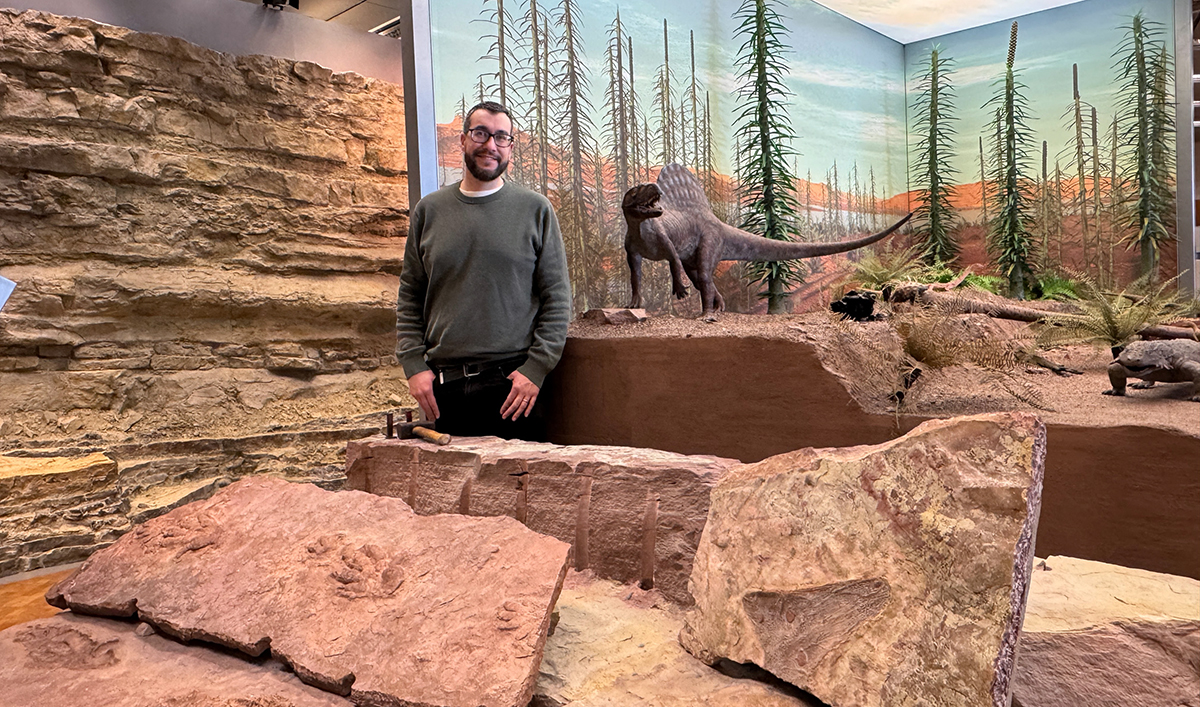The Triassic is one of the most important geological periods in the evolution of life on Earth. Following the largest mass extinction at 252 million years ago, not only did dinosaurs emerge, but also many other groups of vertebrates. Since the early 19th century, the Central European Basin has been a historically significant region for the study of the Triassic and continues to provide a wealth of new and spectacular discoveries. The sedimentary rocks and fossils from this period are particularly well-preserved in southwestern Germany.
An international research team from the State Museum of Natural History in Stuttgart, led by paleontologists Eudald Mujal (associate researcher at the Institut Català de Paleontologia Miquel Crusafont) and Rainer Schoch, has presented a comprehensive review of Triassic terrestrial tetrapods from the Central European Basin. In this study, the team has jointly analyzed, for the first time, all known fossilized skeletal remains and footprints of these animals.

Researcher Eudald Mujal in an area recreating the Triassic habitat of the Buntsandstein at the Stuttgart Museum (photo: M. Rech / SMNS)
Many of the specimens come from the extensive paleontological collections of the State Museum of Natural History in Stuttgart. The study, published in Earth-Science Reviews, provides a detailed reconstruction of Triassic terrestrial tetrapod faunas, their paleoenvironments, ecology, and evolution.
Ecology, biodiversity, climate change
The Triassic period spans from 252 to 201 million years ago. The area of present-day Baden-Württemberg was a central part of the Central European Basin, rich in fossils and extensive Triassic rock outcrops that have allowed researchers to reconstruct the ecosystems of this era.
"The Triassic is an important window into the past for understanding evolutionary patterns, adaptations, and the emergence of ecological niches. Terrestrial tetrapod communities are particularly fascinating. The rise of dinosaurs began in the Triassic, early mammal ancestors already existed, and predatory crocodile relatives coexisted with them alongside giant amphibians. Research on the environment and animal communities is extremely exciting for us," says lead author of the study, Eudald Mujal.
The research shows that the Triassic was a crucial period in Earth's history, laying the foundation for the development of complex life forms and terrestrial tetrapod ecosystems as we know them today. By combining different research approaches, the team was able to draw conclusions about biodiversity, the ecology of individual species, and their response to changing climate conditions at the time.
At the same time, the large number of fossils studied indicates a greater diversity of terrestrial vertebrates in the Triassic than previously thought.
"We have correlated all fossil findings with their paleoenvironments. This has allowed us to understand how Triassic tetrapod communities evolved in their environment and how they responded to climate change, for example. Our results can also serve as a model for modern ecosystems. A global perspective on a geological period such as the Triassic can help us assess the long-term consequences of climate change and the current loss of biodiversity," says Mujal.
"Our team has analyzed all relevant Triassic fossils and geological strata from southern Germany and other parts of Europe to reconstruct Earth's history and the evolution of its organisms. At the same time, a comprehensive review of Triassic terrestrial tetrapods was conducted, combining various research approaches. Overall, our publication represents a key contribution to understanding the history of life and its evolution," says Rainer Schoch, head of the Paleontology Department at the State Museum of Natural History in Stuttgart and co-author of the study.
Main image: Triassic dinosaur sculpture of Plateosaurus at the State Museum of Natural History in Stuttgart (image: M. Rech / SMNS)
Original article:
- Mujal, E., Sues, H.-D., Moreno, R., Schaeffer, J., Sobral, G., Chakravorti, S., Spiekman, S. N. F., & Schoch, R. R. (2025, published online). Triassic terrestrial tetrapod faunas of the Central European Basin, their stratigraphical distribution, and their palaeoenvironments. Earth-Science Reviews. DOI: https://doi.org/10.1016/j.earscirev.2025.105085



